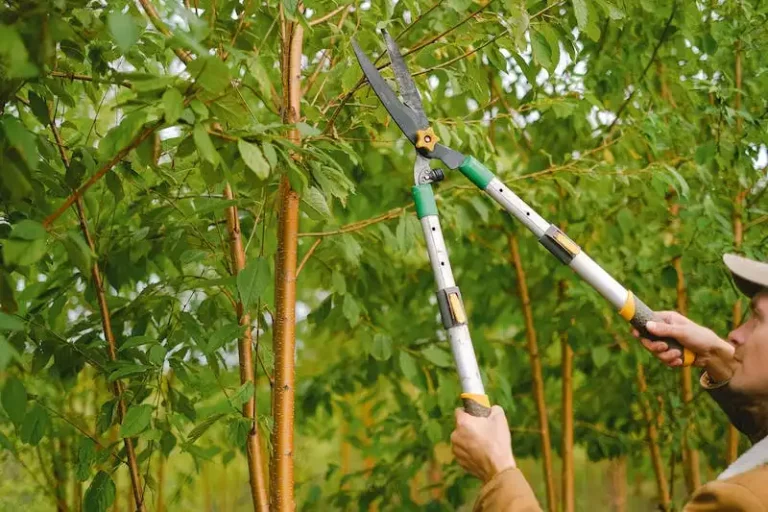Mortgage Lifter tomatoes, also known as “lifters,” are a popular variety among tomato enthusiasts. These tomatoes are known for their large size and delicious flavor. However, growing Mortgage Lifter tomatoes can pose some challenges, especially if you live in an area with frost or unpredictable weather patterns. In this article, we will provide you with seven tips on how to grow Mortgage Lifter tomatoes successfully and enjoy bountiful yields.
1. Choose the Right Location: Mortgage Lifter tomatoes thrive in warm temperatures, so it’s important to choose a location in your garden that receives plenty of sunlight throughout the day. This will ensure that the tomatoes receive the warmth they need to grow and ripen properly.
2. Prepare the Soil: Before planting your Mortgage Lifter tomatoes, make sure to prepare the soil properly. These tomatoes prefer well-drained soil that is rich in organic matter. Adding compost or aged manure to the soil will improve its fertility and provide necessary nutrients for the plants.
3. Water Consistently: Tomato plants require consistent watering to prevent common problems like blossom end rot or cracked fruits. Water your Mortgage Lifter tomatoes regularly, keeping the soil evenly moist. Avoid overwatering, as this can lead to root rot and other diseases.
4. Provide Support: As Mortgage Lifter tomatoes grow, they can become quite large and heavy. To avoid having the fruit touch the ground and prevent pest infestation and diseases, use cages or stakes to support the plants. This will also make it easier to harvest the tomatoes when the time comes.
5. Carefully Propagate: Mortgage Lifter tomatoes can be propagated through seeds or by transplanting seedlings. If you choose to start from seeds, sow them indoors 4-6 weeks before the last frost date. Transplant the seedlings outside once the danger of frost has passed. Be careful when handling the delicate young plants to avoid damaging their roots.
6. Protect from Pests: Like many vegetables, Mortgage Lifter tomatoes are susceptible to pests such as aphids, tomato hornworms, and whiteflies. To avoid pest problems, regularly inspect your plants and take appropriate measures such as using organic insecticides or attracting beneficial insects to your garden.
7. Harvest at the Right Time: Mortgage Lifter tomatoes are ready to be harvested when they are fully ripe. Look for tomatoes that have a deep, uniform color and are slightly soft to the touch. To enjoy the best flavor, allow the tomatoes to fully ripen on the vine before picking them. Be gentle when harvesting to avoid damaging the fruit.
By following these tips, you can successfully grow Mortgage Lifter tomatoes and enjoy delicious, large yields. With proper care and attention, you’ll be able to harvest flavorful tomatoes all season long!
How to Grow and Care for Mortgage Lifter Tomatoes
Mortgage Lifter tomatoes are a popular and delicious variety that produces large yields of juicy fruit. If you’re looking to grow these tomatoes in your garden, here are some tips to help you get started and ensure a successful harvest.
1. Selecting the Right Location: Choose a sunny spot in your garden where the tomatoes will receive at least six to eight hours of direct sunlight each day. Also, make sure the location has well-draining soil that retains moisture but doesn’t become waterlogged.
2. Planting Process: Start by planting the Mortgage Lifter tomatoes indoors about 6-8 weeks before the last frost date in your area. Use seed-starting pots and plant the seeds approximately 1/4 inch deep. Once the seedlings have grown to about 3 inches tall and have developed their first true leaves, you can transplant them into your garden.
3. Proper Support: Mortgage Lifter tomatoes are indeterminate types, meaning they grow and produce fruit continuously throughout the season. To support the tall and sprawling plants, set up stakes, trellises, or cages before transplanting. This will allow the plants to grow vertically and give them the necessary support.
4. Watering and Fertilizing: Keep the soil evenly moist throughout the growing season, as uneven watering can lead to blossom end rot and other diseases. Avoid overhead watering and aim to water at the base of the plants. Fertilize weekly with a balanced fertilizer to ensure sufficient nutrients for healthy growth and fruit development.
5. Disease Prevention: Monitor your plants regularly for signs of common tomato diseases such as early blight, late blight, and powdery mildew. To prevent diseases, avoid overhead watering and overcrowding the plants. Also, provide good air circulation by spacing the plants at least 2-3 feet apart.
6. Harvesting: Mortgage Lifter tomatoes are ready to harvest when they turn a deep pink or red and are firm to the touch. To ensure the best flavor, allow the tomatoes to fully ripen on the vine before picking. Simply twist or cut the fruit from the stem, being careful not to damage the other fruits or the plant.
7. Storing and Enjoying: After harvesting, store your Mortgage Lifter tomatoes at room temperature until fully ripe. Avoid placing them in the refrigerator, as this can negatively affect their texture and flavor. Once ripe, enjoy them fresh in salads, sandwiches, or sauces, or preserve them by canning or freezing for later use.
By following these tips, you can enjoy a bountiful harvest of mortgage lifter tomatoes and savor their delicious flavor throughout the growing season.
How to Plant Mortgage Lifter Tomato
Planting Mortgage Lifter tomatoes, an heirloom variety, requires some careful consideration. Follow these steps to ensure a successful planting and enjoy a bountiful harvest of these delicious tomatoes.
- Choose a suitable location. Select a site that receives at least 6-8 hours of direct sunlight daily and has well-drained soil.
- Determine the spacing. Provide enough space between plants to allow for proper air circulation and prevent the spread of diseases. Typically, 24-36 inches between plants is recommended.
- Prepare the soil. Make sure the soil is fertile and has a pH level between 6.0 and 6.8. Adding organic matter, such as compost or well-rotted manure, can improve the soil’s fertility.
- Plant the seedlings. Start by planting the seedlings at the same depth they were in their pots. Make sure to handle the seedlings carefully to avoid damaging the roots.
- Provide support. Consider using cages or stakes to support the growing plants. This will prevent the plants from toppling over when they become heavy with fruit.
- Water regularly. Tomato plants need consistent watering, particularly during dry periods. Aim to provide 1-2 inches of water per week, either through rainfall or irrigation.
- Watch out for pests and diseases. Keep an eye out for common tomato pests and diseases, such as aphids, tomato hornworms, and blight. Take preventive measures and address any issues promptly to protect your plants.
By following these steps, you can ensure that your Mortgage Lifter tomatoes will thrive and produce a bountiful harvest. Enjoy the benefits of growing your own tomatoes and savor the delicious taste of this heirloom variety.
When to Plant
When it comes to growing Mortgage Lifter tomatoes, timing is crucial. These tomato plants need to be started indoors around 6-8 weeks before the last expected frost date in your area. This will give them ample time to grow and develop strong roots before being transplanted outdoors.
While you may be tempted to start them earlier, it’s essential to avoid transplanting them outside too early. Tomatoes are very sensitive to cold temperatures and can easily be killed if exposed to frost. It’s best to wait until the danger of frost has passed and the soil has warmed up before moving your plants.
Choosing the right location is also key to ensuring a successful harvest. Mortgage Lifter tomatoes thrive in full sun, meaning they need at least 6-8 hours of direct sunlight per day. Find a spot in your garden that gets plenty of sunlight throughout the day. Be sure to avoid areas with too much shade or locations that are prone to strong winds.
To prevent diseases and pests, it’s important to select a location with well-drained soil. These tomato plants also prefer slightly acidic soil with a pH level between 6.0 and 6.8. If your soil is too alkaline, try adding organic matter or compost to adjust the pH level accordingly.
When planting your Mortgage Lifter tomatoes, make sure to dig a hole that is deep enough to accommodate the root ball and the bottom leaves. Remove the lower leaves and bury the stem up to the topmost set of leaves. This will encourage strong root development and a more robust plant.
After planting, be sure to water your tomatoes thoroughly. They require consistent watering throughout the growing season, especially during dry spells. Remember to water at the base of the plants and avoid wetting the leaves, as this can lead to diseases.
In addition to regular watering, it’s also important to provide support for your Mortgage Lifter tomatoes. These plants can grow up to 6 feet tall and produce large, heavy clusters of tomatoes. Using cages or other supports will help keep them upright and prevent the plants from sprawling on the ground.
By following these tips and providing your Mortgage Lifter tomatoes with the optimal growing conditions, you’ll be well on your way to enjoying delicious, homegrown tomatoes with bountiful yields.
Selecting a Planting Site
When selecting a planting site for your Mortgage Lifter tomatoes, there are a few factors to consider. First, you want to find a location that receives at least 6-8 hours of direct sunlight per day. This is crucial for the tomatoes to grow and ripen properly.
Next, the site should have well-drained soil with a pH level between 6.0 and 6.8. You can test the soil’s acidity using a pH testing kit, and amend it with lime or sulfur if needed to adjust the pH level. Good soil drainage is important to prevent waterlogged roots and fungal diseases.
It is also important to choose a site that is sheltered from strong winds. Tomato plants are prone to wind damage, so finding a sheltered location or using windbreaks can help protect them.
In terms of temperature, Mortgage Lifter tomatoes prefer warm weather. The soil temperature should be above 60°F (15°C) when planting seeds or setting out transplants. Tomatoes thrive in temperatures ranging from 70°F to 85°F (21°C to 29°C) during the day and around 60°F to 70°F (15°C to 21°C) at night.
Humidity is another consideration. While Mortgage Lifter tomatoes can tolerate some humidity, high humidity levels can increase the risk of fungal diseases such as blight. Ensuring good air circulation around the plants can help reduce humidity and prevent disease.
Lastly, provide support for your Mortgage Lifter tomatoes. They can grow quite tall and heavy, so stakes or cages should be used to support the plants and prevent them from bending or breaking. Staking is preferred for increased airflow and easier access to the tomatoes, while cages provide more support and are a common choice for larger tomato varieties.
By selecting the right planting site for your Mortgage Lifter tomatoes, you can ensure they have the ideal conditions to thrive and produce delicious, sustainable yields. Whether you’re a seasoned gardener or just starting out, following these tips will set you on the path to a successful harvest!




